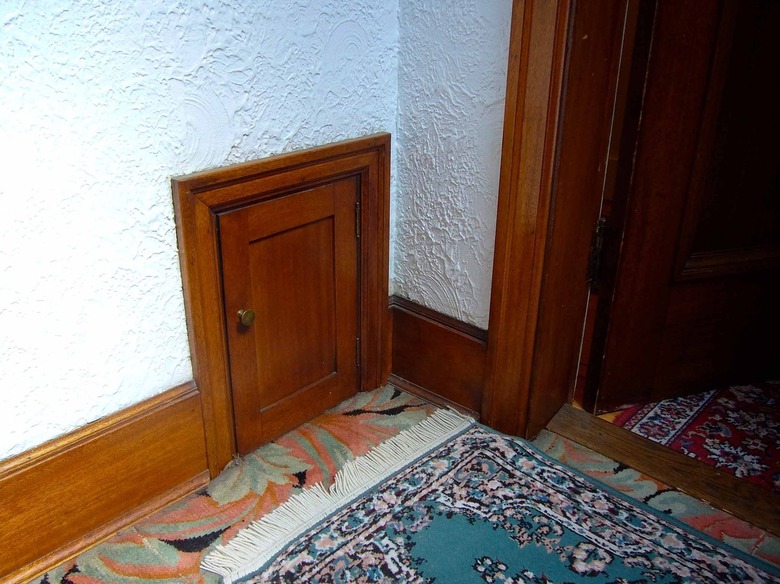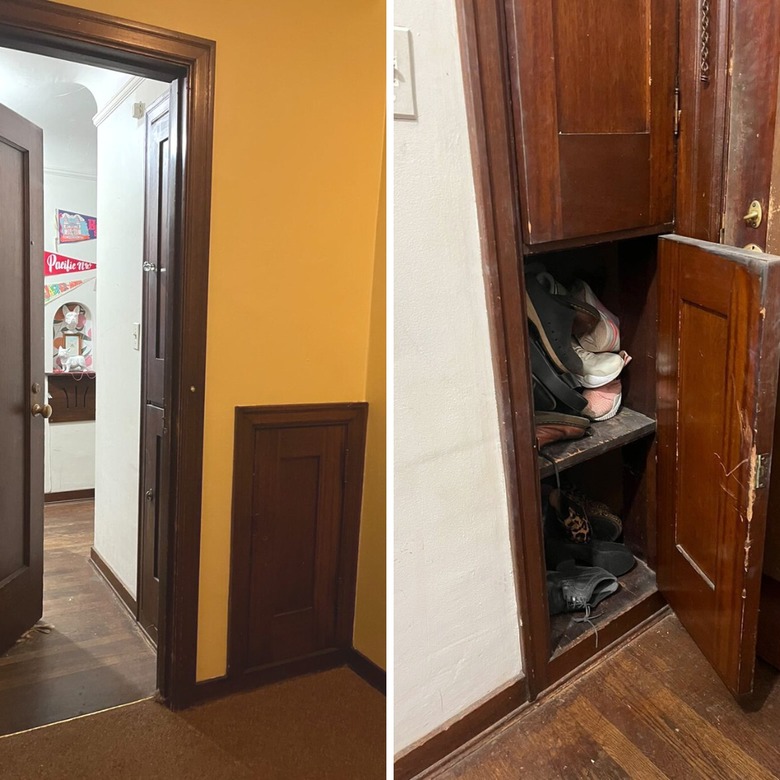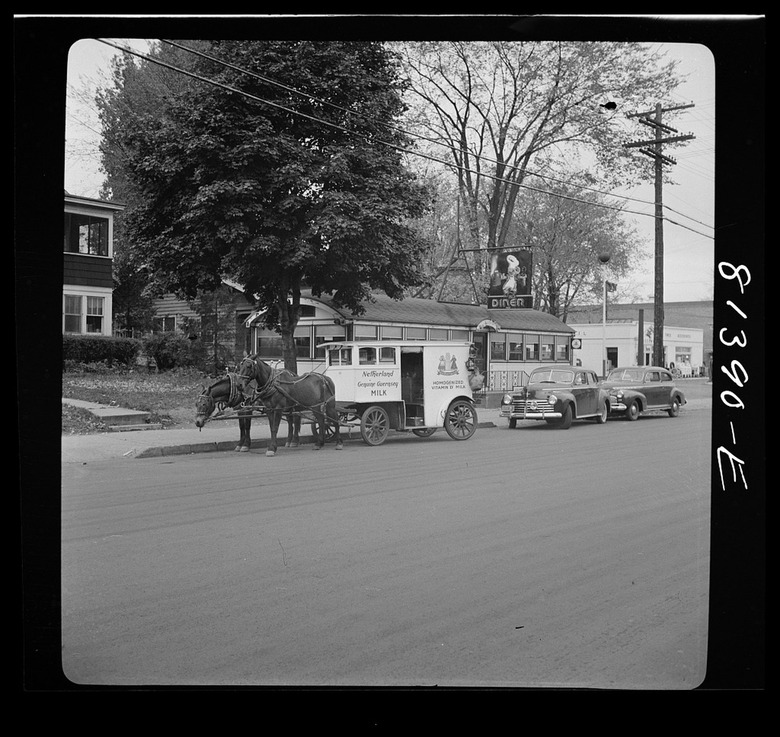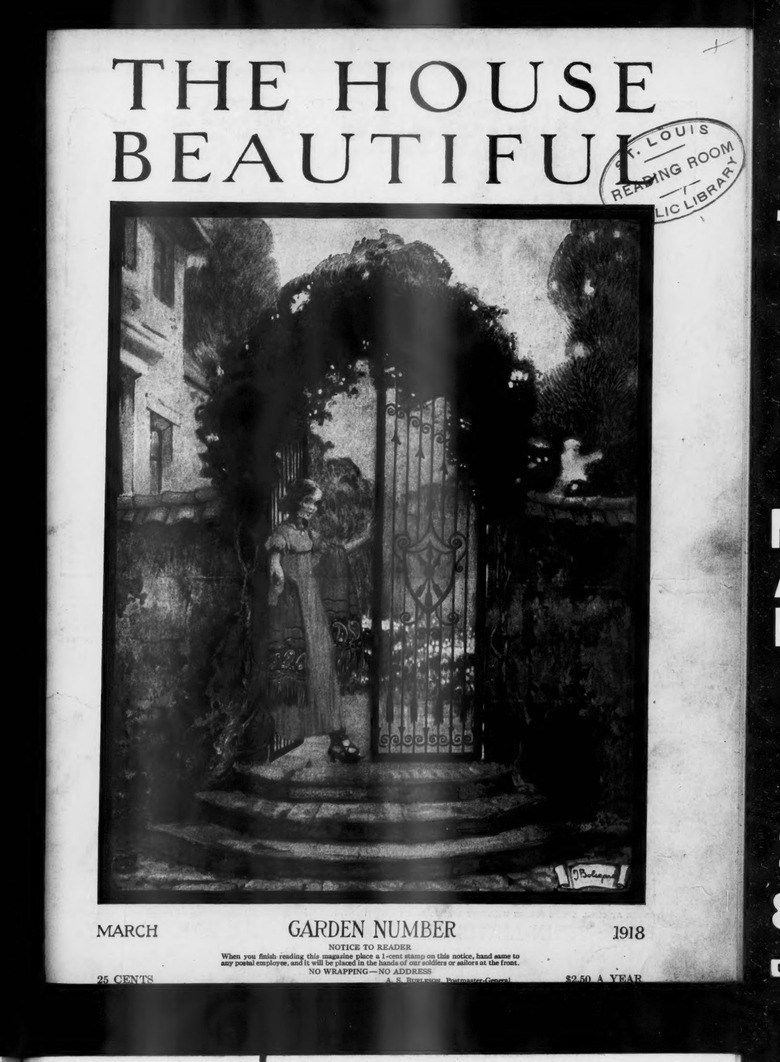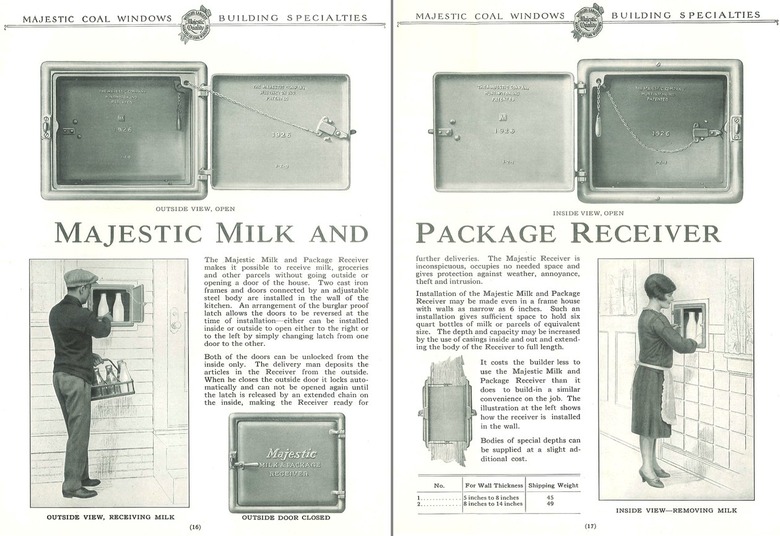Those Miniature Doors In Old Houses Actually Have A Secret Purpose
Here at Hunker, we love a good "mystery" feature in an old home. Take, for example, this drop-down board/seat/thing found in a craftsman home that no one on the internet could quite figure out. We're still scratching our heads.
Our latest old home mystery (cue creepy music) actually has a well-documented answer (cut creepy music). We're talking about those two-way insulated cubbies built into the exterior walls of older homes and apartments. Can you guess what purpose they once served? (I recently asked my Instagram followers if they could identify these little doors of yore. Answers included other forgotten features like laundry chutes, dumbwaiters, and coal doors. Unfortunately, they're all wrong — even the folks who guessed "a void for screaming into" and "an elevator for a family of mice.")
To understand why residences once required tiny access points to the outside world, you'll first need a very condensed (see what I did there?) history of milk delivery in the United States. The first dairy delivery services started in Vermont in 1785 — and before refrigeration was commonplace, almost every American family without a cow in their yard received daily milk deliveries. Early on, most dairy farmers sold milk door-to-door out of barrels. Customers would supply their own containers, like jugs and buckets, and bring them out to be filled. After the first glass milk bottle was patented in 1878, milk delivery became more streamlined, and the concept of the milkman developed into the Rockwellian image most of us can still conjure up to this day.
But where do the tiny doors come in? A 1918 issue of House Beautiful describes the modern convenience of milk doors (also known as cubbies, cupboards, or chutes):
"Milk doors are merely small cupboards built in the wall of the house, generally between the kitchen and the back porch ... The outside door enables the milk man to place the milk in the place provided for it, and when he closes the door, the milk is safe from inquisitive cats and dogs as well as the milk thief. The housewife takes the milk by opening the inside door ... The housewife is not obliged to go out on the porch to get her milk, and she also has a convenient place in which to put the empty bottles after they are washed ... Butter, the morning newspaper, and other small articles can be conveniently deposited in the milk door."
Milk doors provided protection from the elements as well as potential dairy bandits. They also eliminated the need to put on one's robe before fetching the morning paper. Anyone who has scrambled to make themselves decent before retrieving their takeout order can appreciate that.
The 1927 Majestic Products catalog features an advertisement for their sleek milk and package receiver:
"The Majestic Milk and Package Receiver makes it possible to receive milk, groceries and other parcels without going outside or opening a door of the house...Both of the doors can be unlocked from the inside only. The delivery man deposits the articles in the Receiver from the outside...The Majestic Receiver is inconspicuous, occupies no needed space and gives protection against weather, annoyance, theft and intrusion."
With all that convenience, why did milk delivery (and doors) go by the wayside? Access to refrigeration, post-war suburban sprawl, pasteurization, and the rise of the modern supermarket were all contributing factors. By the 1960s, about 30% of residences received milk delivery. By 2005, the last year that the USDA tracked the data point, that number had dropped to .04%. While most milk doors have been sealed up and long-forgotten, the few that still remain have been reimagined for a range of purposes, including package delivery, storage, and even litter boxes.
Milk doors, like many modern household innovations of their time, were marketed as labor-saving conveniences for housewives and often as a not-so-subtle replacement for domestic workers. In an era in which many of us are re-examining our own cultural relationship to household labor and the moral calculus of third-party delivery services, maybe it's time to take a second look at what these portals to the past can teach us, even if you're just using yours to store your shoes.
